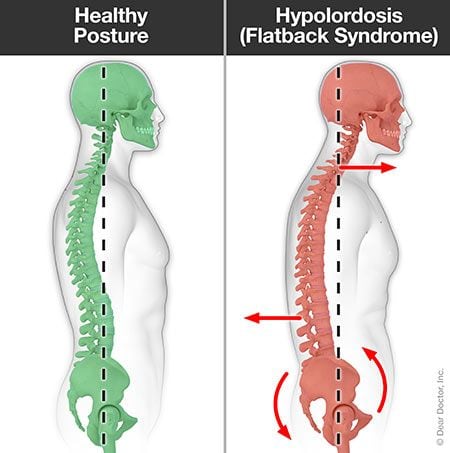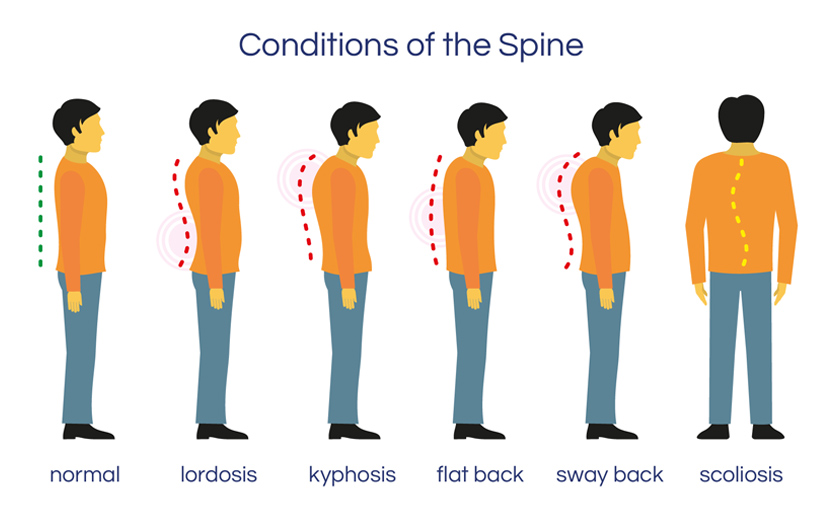Many people face musculoskeletal problems (back pain, shoulder pain, etc.), which can be traced back to the fact that they sit down for over 16 hours a day, creating a lifestyle known as a “Desk Jockey”. If you’re sitting at a desk at work, be it on site or at home, sitting some more after working (watching TV, eating dinner, playing video games), the hours add up. Sitting isn’t really bad for your body, and neither is slouching. However, keeping your body locked in one position (either slouching or sitting), and holding this for days, weeks, and years at a time…this leads to serious consequences, especially for those with genetic predisposition to thoracic and musculoskeletal problems.
A primer on muscles
Muscles always connect to two or more bones, and cross over a joint in between. They can be tightened or lengthened on a semi-permanent basis by exercise and stretching, respectively. For example, by exercising your quadriceps, you will, over time, improve the resting muscle tone of the quadriceps, effectively shortening them. A helpful analogy is to think of your muscles like a piece of rope, and the goal is to get the ropes to their ideal length – this is done by exercise to shorten/tighten and stretching to lengthen/loosen
Your muscles adapt
Keeping your body locked in one position really complicates things because your muscles and ligaments adapt over time to the conditions they are placed in. For example, if you slouch all day in front of a computer, the thoracic portion of your deep back (erector spinae) muscles will lengthen and become weak because they are a) constantly being stretched a little bit (and stretch the posterior ligaments as a byproduct) and b) they’re not being exercised.

Here’s what is happening when you are sitting at a computer
There is a difference between sitting down vs. slouching vs. sitting down at a computer. But it’s key to understand that sitting down, even in good posture, is going to have some negative negative effects although it is “less-bad” than slouching or sitting in front of a computer. Worst case scenario is slouching in front of a computer all day, the biomechanics of which are described below.
- Your pelvis is tilted posteriorly to a significant degree. This can be visualized as the end range-of-motion if you were trying to hump something while standing.
2) Your lower back is in flexion, meaning your spine is curved backwards like the left parenthesis ( to a high degree.
3) Your upper back is in flexion, meaning it’s bent forward and hunched to a high degree.
4) Your shoulders are vertically positioned over your thighs, instead of over your pelvis.
5) Your head is positioned even further out over your thighs than your shoulders.
6) Your forearms are internally rotated, creating an inward facing palm near the maximum of the end range-of-motion.
7) Your ilacus and psoas are stretched significantly.

Over time, your body will adapt to all of the positioning noted above – everybody will react a bit differently, but the following points describe the typical state of affairs.
1) Posterior pelvic tilt will put your hamstrings in a shortened position, and can contribute to chronically tight hamstrings.
2) The excessive lumbar flexion reduces the natural inward curvature of your lower back, giving you a “flat” lower back. This stiffness places a lot of extra stress on the local musculature, resulting in chronic back main near the middle of your back, and forced posterior pelvic tilt when standing.
3) The excessive forward bending of your upper back results in your body adopting this flexion posture over time. This means that you will have excessive kyphosis when standing. Remember Quasimodo? This also becomes an issue if you read books a lot, because your back is hunched to a greater degree than when you sit at a PC. Book stands help, get one already. Excessive kyphosis brings a big list of problems and injury predispositions, such as shoulder impingement and chronic headaches (alongside a forward-head posture).
4) Your shoulders aren’t squarely over your pelvis. This is a position that is contributed to, and worsened by the fact that you’ve had a kyphotic posture from slouching for years, bringing a bunch of other problems. In this position, your shoulders naturally ride high on your thorax causing 1) a very tightened/shortened upper trapezius muscles which are positioned so that they are activated whenever you move your arms/hands around, and 2) your levator scapulae is in a continuously lengthened position and overstretched as a result. The results of this are that 1) your upper trapezius becomes very strong but extremely tight (getting it massaged feels amazing) and 2) your levator scapulae become weak and overlengthened (getting it massaged also feels amazing).
5) Your iliacus and psoas (jointly referred to as the iliopsoas muscle) are going to become weak from constantly being in a relaxed position. Your flat lower back and/or natural tendency to posterior pelvic tilt are going to impact your standing posture as a result, because your knees and pelvis are going to be positioned in front of your ankles (instead of directly over them) when viewed from the side, and your upper body compensates by leaning backwards. This new posture puts your iliopsoas muscle into an overstretched/relaxed state in the same manner that sitting down does.
How do I fix this?
This is a lot of information. Lots of generalizations were made about how a typical human body reacts to a seated lifestyle. Don’t get stressed, you’re not the typical person. You could be old, you could be young, you could be an athlete, you could be fat, you could have arthritis – you could be anyone. Before you start googling “posterior pelvic tilt” , “excessive kyphosis”, and “flat back”, it’s important for you to know if you actually have these problems. Would you find relief in knowing that some people’s bodies react in exactly the opposite way to what was described above, and that doing corrective exercises and stretches for the conditions I described above could actually make your problems worse? The last thing we need is for someone to go down a random path from another site and go hurt themselves

I will write an article on how to fix each one of the problems noted. In the meantime, consider reading the Pardon My Posture article on back massagers. To give a brief preview, the article involves analyzing your body, including posture, with a digital camera’s help. For now, lie down on your back (supine) on a hardwood floor, relax, and get a friend to try and fit their fingers under your lower back. If your friend can’t get anything under there you may have reduced lordosis. If your friend can roll a softball under there, well, then you have different problems.
Application
I think people run into problems when they try to exercise because they assume their body is normal and should function normally. Instead, they should be viewing their body through a different lens – their body is good at sitting, and has adapted to sitting over time. This makes it predisposed to specific injuries and problems. A gym routine or rehab plan needs to be designed with this framework in mind, since most everyone these days spends a lot of time sitting. Don’t assume things are normal at first.
If you’re an athlete, don’t assume this article doesn’t apply to you and your sport. I.e, as a cyclist or rower, you put your body in extreme spinal flexion and posterior pelvic tilt more than a desk jockey does, for some long periods of time. If you’re a runner, or soccer player (with a daytime desk job), consider what excessive kyphosis does for your gait. It puts more weight over your toes as you run, potentially causing knee pain amongst some other annoying problems.

TLDR
Odds are, your sedentary lifestyle is giving you some musculuskeletal (and/or digestive and mental health) issues. Take action to learn what’s going on with your body, and what the ideal should be. Get notifications on upcoming posts when you sign up with your email. Let’s get healthier together.
Additional Reading
To be added
Sources
The Floota website (now defunct)
Neanderthal No More (Parts 1-5) on T-Nation by Eric Cressey and Mike Robertson
Common Postural Deficiencies @ exrx.net
Heal That Hunchback on T-Nation by Mike Robertson
Conquering Enemies of the Spine on T-Nation by Michael Stare and Cassandra Forsythe